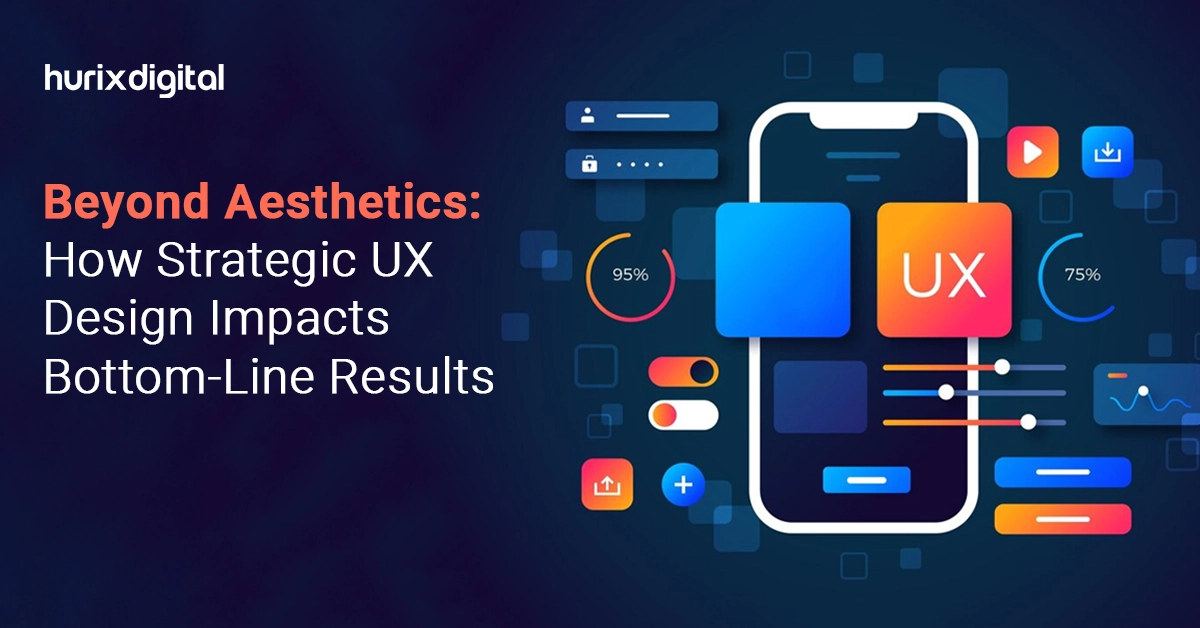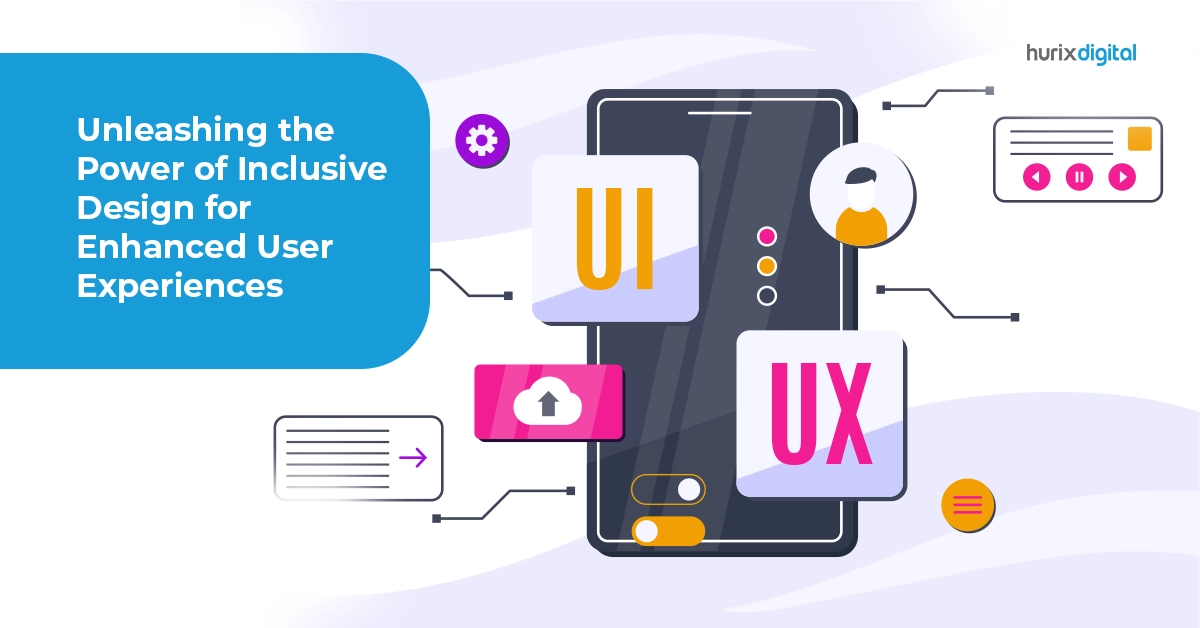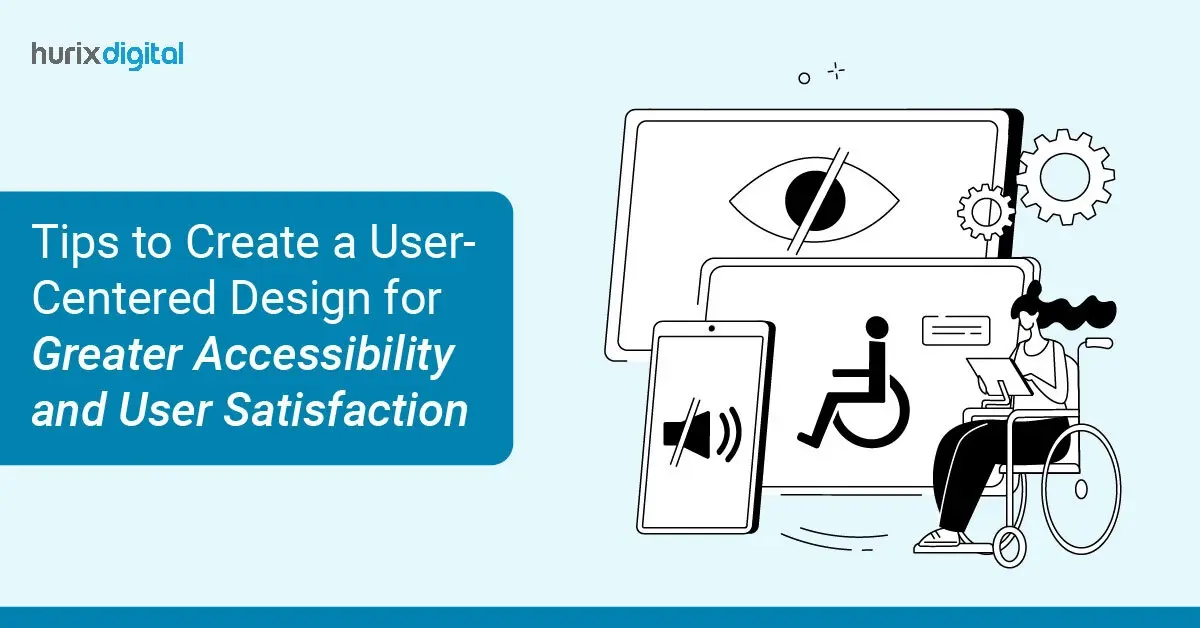
Beyond Aesthetics: How Strategic UX Design Impacts Bottom-Line Results
Summary
This blog discusses how data-driven UX design as a service optimizes user journeys, increases conversion rates, and drives revenue growth, aligning with business objectives.
Does your UX design only look good, or is it improving your financial results?
Moving beyond mere aesthetics, strategic UX design is essential for improving business results. When UX is utilized as a service, it goes beyond traditional design frameworks to become an essential aspect of business strategy, boosting user interaction and contentment. This method enhances the user interface and has a major impact on revenue, customer retention, and market competitiveness.
Moreover, investing in UX design can yield high profits, with companies having the potential to attain an ROI of 9,900%. Typically, for every $1 invested in UX design, there can be a $100 return. Thus, understanding and implementing UX as a service enables companies to use data to make decisions that align with their growth objectives and improve user satisfaction across all interactions.
Table of Contents:
- Understanding UX as a Service
- The Link Between Strategic UX Design and Business Growth
- Data-Driven UX Decisions and Their Impact on Revenue
- Boosting Customer Retention Through UX Improvements
- Implementing User Journey Mapping for UX Enhancement
- Wrapping Up
Understanding UX as a Service
UX as a Service (UXaaS) transforms the way companies handle user experience by integrating it into continual operations instead of viewing it as a singular project improvement. This service model guarantees that UX design remains dynamic, being constantly improved with real-time user data and feedback.
Incorporating UXaaS into business practices involves methodically improving user interface and interaction on all digital platforms. Such integration allows companies to adapt swiftly to user needs, optimize user paths for better engagement, and drive business growth.
By employing UX as a Service, organizations can consistently apply strategic UX principles to every facet of the user journey, ensuring every update and decision is aligned with broader business goals and user satisfaction metrics.
Also Read: How can ChatGPT for Customer Service Enhance Professional Efficiency?
The Link Between Strategic UX Design and Business Growth
Strategic UX design is intricately connected to the expansion of businesses by having a direct impact on user engagement and conversion rates. An effectively designed and well-optimized user interface has the potential to increase conversion rates. Strategic UX also improves digital interface usability and functionality by understanding user needs and behaviors, leading to increased user satisfaction and loyalty. Emphasizing user-centered design guarantees that every interaction is intuitive and efficient, resulting in higher user retention and conversion rates.
Additionally, strategic UX design betters the user experience by streamlining the user journey to eliminate any obstacles that could prevent potential conversions. Businesses can greatly decrease user frustration and abandonment rates by simplifying processes like checkouts, registrations, and data entry. Such improvement has a direct impact on profits by converting more users into paying customers or keeping them engaged for longer durations.
Besides, offering UX as a service enables companies to constantly gather data on user interactions, which can then be analyzed to inform decisions and enhance the UX. The continuous process of testing, receiving feedback, and making improvements establishes a proactive atmosphere. This ensures that UX changes are implemented instantly, keeping up with changing user demands and market trends.
Data-Driven UX Decisions and Their Impact on Revenue
Data-driven UX decisions are crucial for refining user experience and directly driving revenue growth. For every second delay in mobile page load, conversions can fall by up to 20%. This statistic highlights the importance of performance optimizations within UX design, showing that quick loading times and responsive interactions are essential.
Here’s how the strategic use of data improves UX and impacts financial outcomes:
1. Personalization
Data insights allow for tailored user experiences, which increase engagement by presenting users with options that align with their preferences and past behaviors.
2. Optimization of User Journeys
By analyzing user behavior data, companies can identify bottlenecks or drop-off points in the user journey. Streamlining these paths boosts conversion rates by reducing user frustration and abandonment.
3. A/B Testing
Implementing A/B testing based on user data helps determine which UX elements work best. This method allows businesses to adopt only the most effective changes, maximizing revenue generation potential.
4. Predictive Analytics
Predictive analytics in UX design anticipates user needs and proactively addresses them. As a result, customer satisfaction increases, leading to more repeat business.
5. ROI Measurement
Data-driven UX enables precise measurement of return on investment from specific UX initiatives, providing clear links between user experience enhancements and revenue growth.
Boosting Customer Retention Through UX Improvements
A good UX design makes sure that each user experience is natural, effective, and enjoyable, which helps to create loyal customers and promote returning business.
Here’s how better UX design leads to increased retention:
- Intuitive Navigation: Simplified navigation improves user experience by making it easier to find information, which reduces frustration and encourages repeat visits.
- Responsive Design: Responsive design is important for ensuring a smooth user experience on all devices and keeping user engagement high in a digital world that is increasingly becoming mobile-based.
- Personalized Experiences: Adapting user engagements according to personal preferences and previous actions can help users feel appreciated and encourage loyalty.
- Feedback Mechanisms: Including user-friendly feedback tools in the UX helps users share their requirements and complaints, enabling brands to make essential changes and enhance satisfaction levels.
- Frequent Updates: Regularly updating the user experience to meet user needs and incorporate current design trends maintains a fresh and engaging experience.
Implementing User Journey Mapping for UX Enhancement
User journey mapping plays a crucial role in UX services by providing an in-depth understanding of the user’s interactions at different touchpoints. This procedure includes making detailed maps that show the progression of users when engaging with a service or product, from first contact to continued interaction.
- Pinpoints Problem Areas: Understanding the user journey reveals where users struggle or feel frustrated, enabling specific enhancements to be made.
- Improves Personalization: Knowing the journeys that various user groups follow allows for more individualized and pertinent user interactions, resulting in increased satisfaction and engagement.
- Increases Conversion Rates: By analyzing user behavior to identify areas of disengagement, UX designers can optimize pathways or implement needed interventions to increase conversion rates.
- Enables Comprehensive Perspective: User journey mapping offers a comprehensive perspective of user interaction with the system, showcasing both successful aspects and areas for improvement.
- Facilitates Proactive Decision-Making: By having a detailed user journey map, companies can predict user requirements and implement proactive adjustments to prevent problems.
Also Read: AI-Enabled Closed Captioning: A Game-Changer for Customer Engagement
Wrapping Up
UX as a service transcends traditional design to become a strategic asset that drives business growth and customer satisfaction. By implementing strategic UX design, businesses can optimize user interactions to improve engagement, promote customer retention, and increase revenue.
As organizations strive to stay competitive in the digital age, investing in UX is not just beneficial; it’s essential. Discover how Hurix Digital can transform your UX strategy to meet modern business demands and drive real results.
Contact us to learn more about our comprehensive UX services tailored to your business needs.

Associate Vice President – User Experience Design
A passionate UX leader driving business excellence through design, strategic growth, and innovation. With a track record of over 10 years, I’ve spearheaded impactful customer experiences across Financial Services, Banking, EdTech, MedTech, and E-commerce realms.







